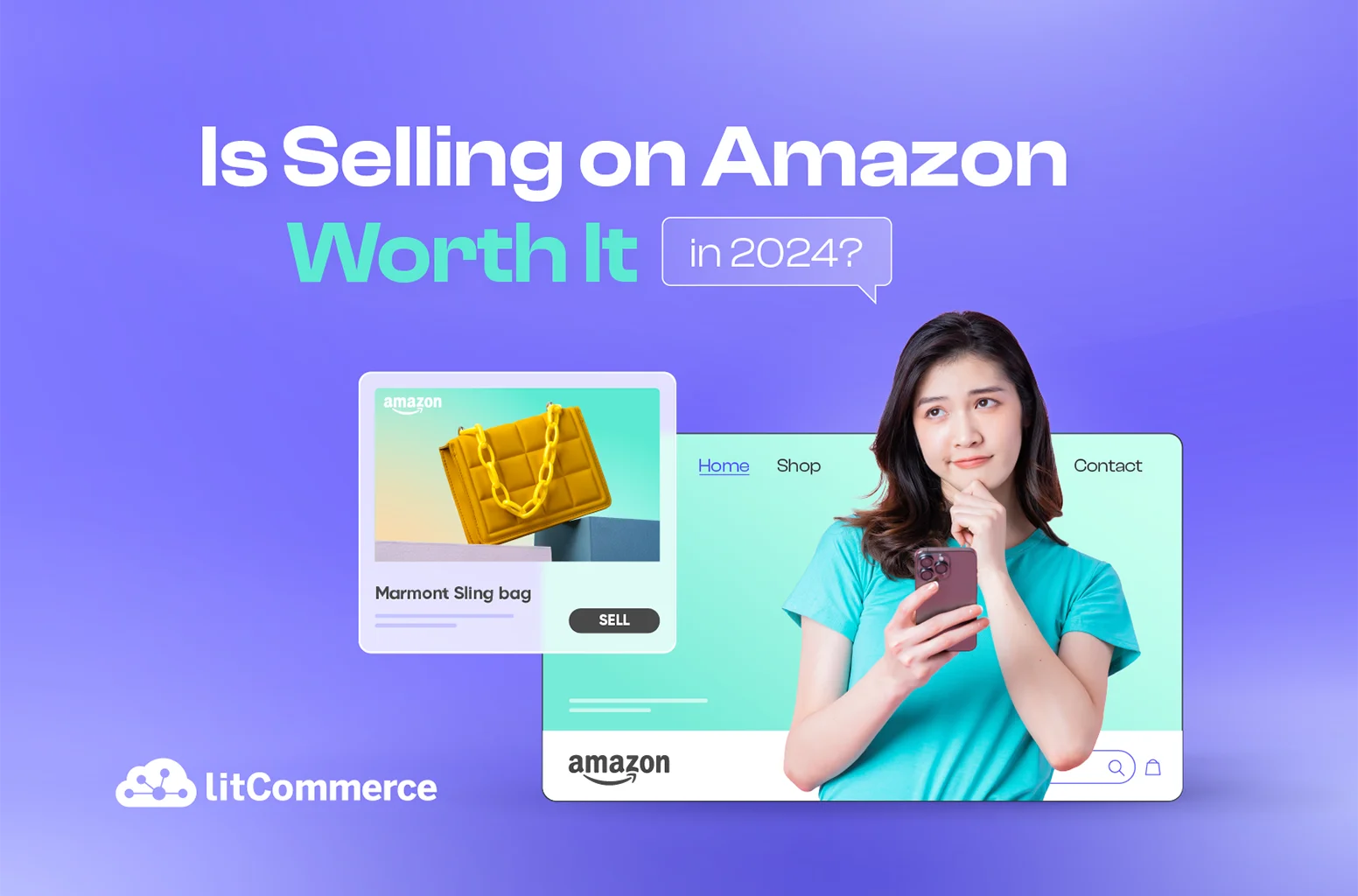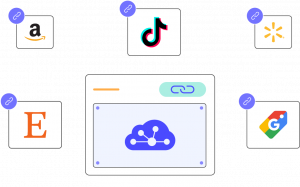Is selling on Amazon worth it in 2025? Yes, selling on Amazon is still worth it because of its massive customer database of over 2.2B total monthly visits and a high-profit margin from 21% to 25% for many businesses and individuals in 2024.
Considering whether Amazon is a good fit for your small business? In this article, I’ll share my research and experience to evaluate how Amazon can benefit sellers like you.
First, here are some key takeaways about selling on Amazon in 2024:
- Amazon had over 2 million active sellers in 2024 [1]
- Amazon makes an estimated $1.4 billion in sales per day.
- 19% of Amazon SMB sellers enjoyed a profit margin of 21% to 25% in 2023.
- 45% of sellers were generating $1,000 to $25,000 in monthly sales. [3]
If Amazon Is Worth Selling, Why Not Start Now?
LitCommerce is a powerful multichannel selling tool. Any seller can sell on Amazon and other potential sales channels, LitCommerce handle listing management, inventory and order sync. Sounds promising right?
How Much Does an Average Amazon Seller Make?
The average monthly sales for Amazon sellers vary widely:
- According to a Statista net sales value 2021-2026 published in 2022 forecast, sellers on Amazon earn over 160 billion dollars on Electricals and over 140 billion dollars on Fashion and Apparel.
- Following the JungleScout survey on January 2024
- On average, new Amazon sellers are earning an average profit of nearly $30,000 per year
- 25% of Amazon sellers make $25,000 to $250,000 per month, translating to annual sales between $300,000 and $3,000,000.
- 45% of Amazon sellers make $1,000 to $25,000/month, which could mean $12,000 to $300,000 in annual sales.
- The profit margin for Amazon sellers varies, with over half of sellers (55%) seeing profit margins higher than 15% and 38% seeing profit margins above 20%. On the other hand, 8% of sellers report that their businesses haven’t yet been profitable.
Overall, the earnings of an average Amazon seller can range from a few hundred dollars to millions of dollars annually, depending on various factors, including sales volume, product category, and business expenses.
Is Amazon seller worth it? I must say a big yes. Many Amazon sellers have seen substantial revenue growth due to the platform’s wide reach and the ability to scale their businesses efficiently.
If you are still curious about how much Amazon sellers make, It would better to read How much do Amazon sellers make to find how profitable Amazon is or how much you can earn from selling on Amazon.
What Profit Margin Do Amazon Sellers Make?
Average profit margin of Amazon sellers:
- Most Amazon sellers achieve a profit margin of 15% – 20%, with 32% of sellers seeing profits of 20% or higher. Only about 9% of sellers have a profit margin below 5% or less. If you are a new seller, it could be a challenge for you in the long run.
- The largest portion of Amazon sellers falls into the 16%-20% profit margin range.
Profitability:
- Over half of Amazon sellers (55%) see profit margins higher than 15%, with 38% seeing profit margins above 20%.
- 24% of SMB (small- and medium-sized businesses) Amazon sellers have reached lifetime sales of over $100,000
- Most Amazon sellers make at least $1,000 per month in sales, with some super-sellers making more than $100,000 each month in sales. 45% of Amazon sellers make $1,000 to $25,000/month, which could mean $12,000 to $300,000 in annual sales (Source: JungleScout )
Average time to make a profit:
- Most sellers take 2+ years to turn a profit, but 22% of Amazon sellers said it took less than 3 months to turn a profit, and 58% are profitable within their first year.
- 16% of sellers who launched their brand stated it took 3-6 months, and 11% reported it took roughly 1-2 years before turning a profit.
In short, most Amazon sellers achieve a profit margin of 15% – 20%, and it takes 66% to turn a profit in less than six months and 42% to turn a profit in fewer than three months.
Important note: While Amazon businesses can be very profitable, it’s important to be realistic about the timeframe. It can take 6 months to a year before you see a return on your investment.
After subtracting all its costs, an average 15% – 20% profit ratio is worth trying. So, “Is Amazon’s business profitable? Totally yes.
4 Big Pros of Selling on Amazon
Amazon has quite a few benefits to prove that “yes” is the answer to the question, “Is selling on Amazon worth it.” Below are some of the most prominent advantages of selling on Amazon:
- Effortfulness Amazon FBA stock management;
- Special Amazon Prime Boost Sales;
- Good Brand Protection Policies;
- Access to the Amazon Loyalty Program.
However, be aware that Amazon vs Amazon marketplace are different. While products listed on Amazon itself belong to and are sold by Amazon, Amazon Marketplace is a platform for vendors where third-party sellers list and sell their products alongside Amazon’s offerings.
Effortfulness Amazon FBA stock management
Amazon FBA (Fulfillment by Amazon) is a service where sellers store their products in Amazon’s fulfillment centers, and Amazon handles storage, packaging, and shipping. This service is different from Amazon FBM, where sellers do their fulfillment process.
Amazon FBA, with 180+ global fulfillment centers, streamlines your business growth by handling inventory and logistics. Once joining Amazon FBA service, these are benefits for sellers:
- Amazon takes care of the entire fulfillment process for sellers. This includes picking the right items from the shelves, securely packaging them, and ensuring swift delivery to the customer.
- Amazon’s customer service team handles all inquiries, returns, and refunds, freeing you to focus on product sourcing, marketing, and business growth.
- Amazon will give your products the Prime Badge and offer same-day or next-day shipping for eligible customers, increasing your chance of winning the Offer Display, which appears with the “Add to Cart”
- The chance to join a Buy Box that puts your product in the prime spot for 1-click additions to carts, significantly increasing the seller’s chance of winning the Offer Display.
- Participate in Prime Day – an annual shopping festival with exclusive benefits for both sellers and customer Prime members
By taking care of storage, fulfillment, and shipping, FBA frees you from managing those tasks and the associated costs like rent and employees. This allows some sellers, with just a small team, to run profitable multi-million dollar businesses on Amazon without needing a large warehouse or a full staff. So, if you ask me again, “Is selling on Amazon worth it?” I would say “yes”
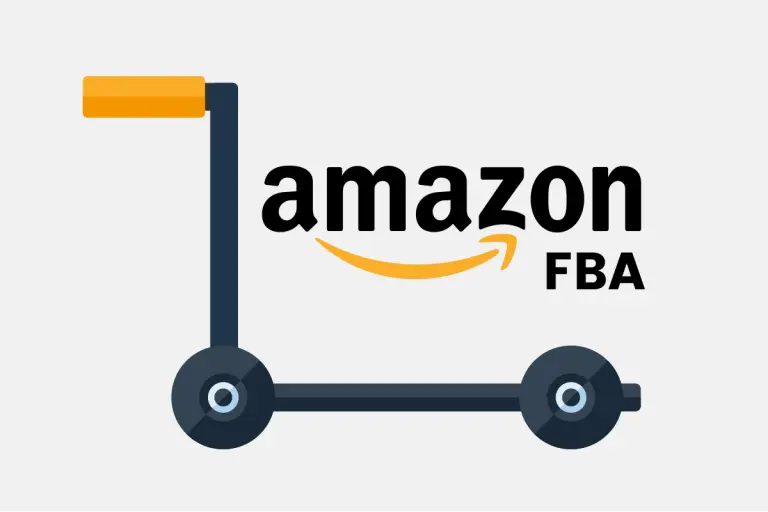
Special Amazon Prime Boost Sales
Seller Fulfilled Prime is the Prime program that allows sellers to deliver directly to domestic Prime customers from their warehouse. For more detail, these benefits include:
- Provide customers with fast and reliable shipping options. These include unlimited access to two-day or even same-day shipping on eligible products. Thus, offering prompt service may encourage more people to buy your items and encourage repeat business.
- Sellers get a special Amazon Prime Boost. Prime Sellers can display a Prime badge on their listing, making their product more visible and magnetic to customers.
- Approach customers before other sellers. Prime sellers can reach out to customers one day or a few hours early, especially in festival sales, etc. It’s a big benefit for sellers.
- Prime Day’s biggest sales day. This annual event for Prime members allows them to get access to free, amazing deals, products, fast delivery, world-class customer service, exclusive savings, expansive selection, convenience, and quality digital entertainment. Here are some sales statistics about Prime Day:
- Prime members worldwide purchased a whopping 375 million items during Prime Day 2023.
- Prime members saved a record-breaking amount of over $2.5 billion during Prime Day 2023.
With these 3 benefits, the answer would be a big yes to the question, “Is selling on Amazon worth it?”
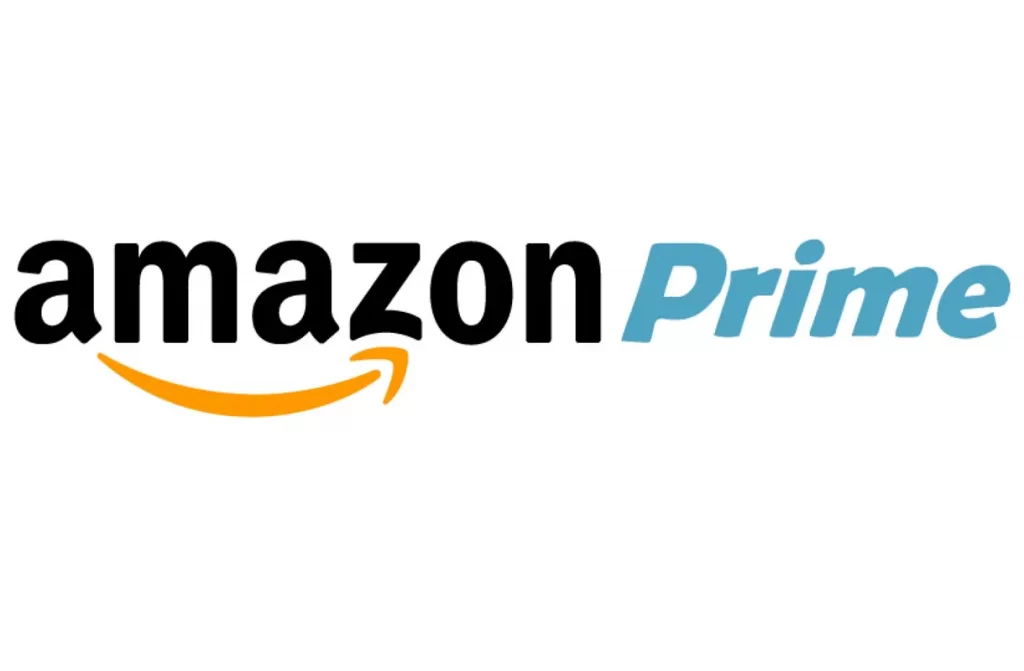
Good Brand Protection Policies
Amazon has a set of policies aimed at protecting your brand. Here’s a breakdown of their approach:
- Brand Registry: This program allows brands to register their trademarks and intellectual property with Amazon. Once enrolled, Amazon offers tools to:
- Proactively detect and report suspected infringements through the Amazon brand registry.
- Participate in Project Zero, a report on a Violent tool that empowers brands to take down counterfeit listings without contacting Amazon directly.
- Counterfeit Prevention: Amazon invests in technology and teams and creates the Amazon Counterfeit Crimes Unit (CCU) to work with brands, law enforcement, and customers across the globe. It cracks down on counterfeiting by stopping bad actors and holding them responsible.
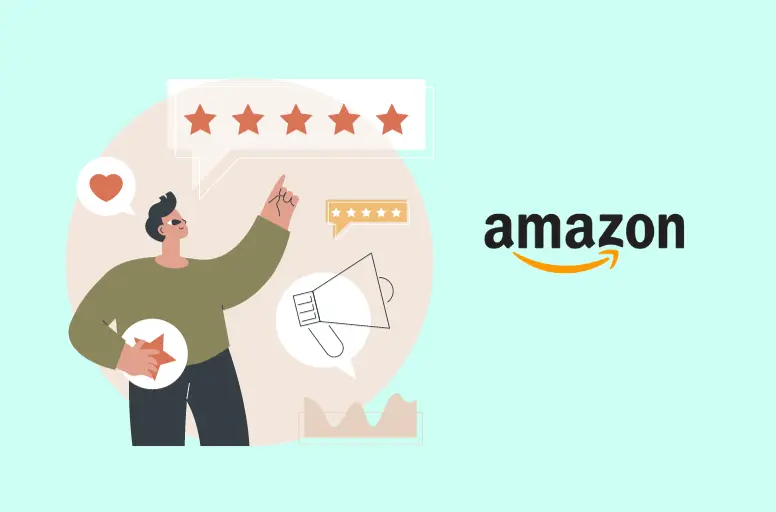
Access to Amazon Loyalty Program
Here are key data points about Amazon Customer Loyalty Statistics according to BusinessDIT
- 89% of Amazon customers are loyal to Amazon;
- Amazon Prime members have a 93% retention rate after one year and a 98% retention rate after two years;
- 46% of Prime members purchase on Amazon at least once a week;
- Customer satisfaction score reached 84 out of 100 ACSI (an objective measure of customer satisfaction) points, showcasing a high level of contentment among its users.
At its core, Amazon Prime qualifies as an Amazon loyalty program that offers many exclusive rewards, personalized experiences, and incentives, such as free one-day shipping, streaming services, and exclusive deals for customers, to increase customer loyalty. These elements combine to make Amazon Prime a powerful tool for cultivating long-term customer loyalty and driving high sales revenue.
3 Main Cons of Selling on Amazon
However, similar to any platform, there are selling on Amazon pros and cons. Amazon presents some challenges that may prompt you to evaluate “Is it worth selling on Amazon carefully? It includes:
- High competition;
- Limited control;
- High rate of returns;
Let’s go into detail.
Feeling Risky When Selling on Amazon?
Most businesses doesn’t choose Amazon as the only one place to sell their items. That’s why LitCommerce is here to help you list and sell on Amazon and other top online marketplaces without the need of manual management.
High competition
Fierce competition is the first disadvantage that makes sellers think “Is Amazon business profitable?” As mentioned above, Amazon has up to 2 million sellers, which is an incredibly huge number, right? Of course, not all of these sellers are your competitors. There are 2 types of competitors that you have to face:
- Seller sells the same items: Unless you sell super niche products, like handmade or customized items, you’ll encounter many competitors in your industry. This is especially true when your store has the best products to sell on Amazon. Moreover, you need to understand that unlike Google Shopping, which organizes product pages by seller, Amazon pages are organized by product. So, you must compete with sellers who own the same items for the Amazon Buy Box.
- Amazon: When Amazon starts selling a product similar to yours under its brand, it naturally becomes your strong competitor. You compete directly with Amazon, and attracting traffic to your listings can cost a lot of effort. So, if possible, always choose products that Amazon doesn’t sell.
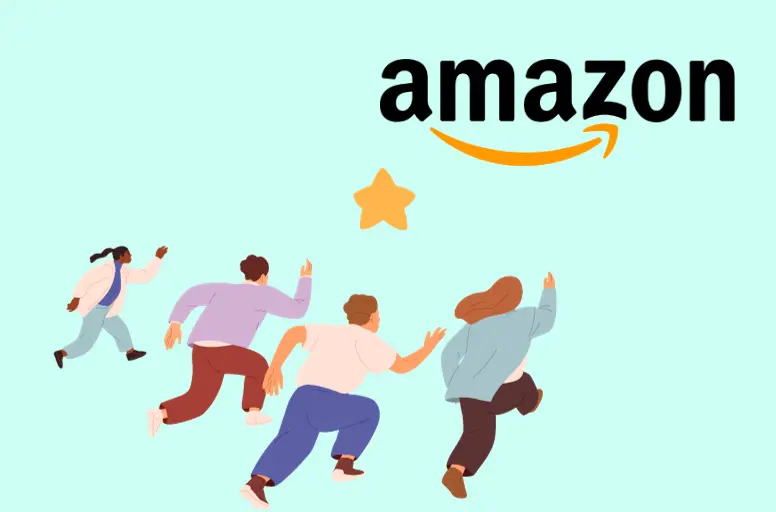
Limited control
Amazon seller limits control in several ways that can lead to suspicion for Is it good to sell on Amazon, which is:
- Strict policies and guidelines: These policies cover various aspects of selling on the platform, including product listings, pricing, customer service, and fulfillment. Sellers must follow these guidelines to maintain their selling privileges on Amazon.
For instance, Amazon prohibits the sale of many products, including opened or second-hand cosmetics, products in non-original packaging, counterfeit products, and products that require a doctor’s prescription. To protect its customers, Amazon also prohibits the sale of explosives, weapons, and certain accessories.
- Algorithm-driven search and ranking system: The platform uses complex algorithms to determine the visibility and ranking of products in search results. This means that sellers have limited control over how their products are displayed to potential customers. They must optimize their listings and maintain high customer ratings to improve their chances of ranking higher.
The Amazon A9 and A10 Algorithms are the systems Amazon uses to determine which products to rank within the search results. These algorithms are based on sale performance history, relevance, conversion rate, etc, to rank your product.
High rate of returns
In 2023, the average return rate across different product categories typically sits between 5% and 15%. Amazon considers a 10% return rate to be normal.
Following sales on Amazon reviews from sellers, high return rates can have a lot of negative impacts for them, including:
- Returns can result in financial losses for sellers, as they may have to refund the purchase price and bear the cost of return shipping.
- A high rate of returns can negatively impact a seller’s reputation, leading to decreased customer trust and potential loss of future sales.
How Much Does It Cost to Start Selling on Amazon?
The belief that selling on Amazon will be too expensive is one of the main hurdles that new sellers have to tackle. According to JungleScout, although the majority of sellers (64%) began their Amazon businesses with $5,000 or less, 25% started with less than $1,000, and 16% with less than $500! But, as a small business owner on Amazon, I’m sure that besides the money you have to put more time and effort into finding, testing, and running your shop.
Also, please take note of these Amazon seller fees that you may have to pay when answering questions “Is selling on Amazon worth it?”. The specific fees depend on the type of selling plan you choose and the products you sell. Here is a breakdown of the main fees associated with selling on Amazon:
- Monthly subscription fee: You should opt for the Professional selling plan if you plan to sell more than 40 items per month, and you’ll be charged a monthly fee of $39.99. Individual sellers, on the other hand, will need to pay a per-item fee of $0.99 for each item sold.
- Referral fees: Amazon charges referral fees on each item sold, which are a percentage of the item’s sale price. The referral fee varies depending on the category of the product and can range from 6% to 45% of the sale price.
- Fulfillment fees: If you choose to use Amazon’s fulfillment service (Fulfillment by Amazon or FBA), you will incur fulfillment fees.
- Other fees: Additional fees may apply for services such as advertising, storage, and optional programs. These fees are optional and depend on the specific services you choose to use.
So, is selling on Amazon worth it? The answer is yes, with sellers who have strong financial preparation and good pricing strategies. However, these fees can be a real burden for sellers with low-profit margins. At this time, opening an Amazon store is not a smart decision.
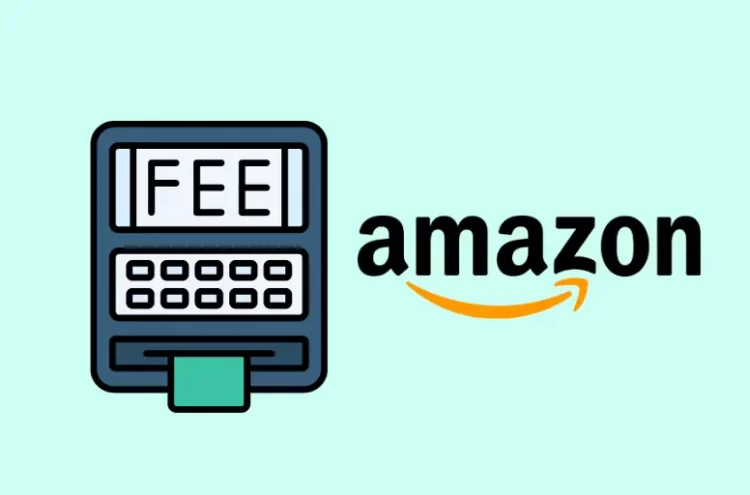
Want to know more about how to start listing products, tracking sales, and managing inventory, here is your detailed guide:
Who is Selling on Amazon And Is It Right for You?
Almost everyone can become an Amazon seller because they offer two sales plans with different levels and sets of services. From my experience, if you plan to sell less than 40 products monthly, starting with the individual plan is ideal. It keeps things simple while you still have basic tools and services such as listing one product at a time, getting help from seller support, and managing
Here are some statistics about new sellers selling on Amazon. In the US,
- 60% of sales in the Amazon store come from independent sellers—most of which are small and medium-sized businesses.
- In 2024, 41% of new sellers are looking for extra income to supplement their existing income.
But if you still consider “Is selling on Amazon worth it for you?” But if the answering this set of questions is “yes,” you should start selling on this platform:
- Can you offer competitive pricing? Remember that staying price-competitive helps you stand out from the vast number of sellers on Amazon.
- Can you comply with Amazon’s regulations? This includes responding to customer messages promptly (within 24 hours), following usage guidelines, etc.
- Can you avoid competing directly with Amazon’s brands? For example, if you sell household essentials, competing with Amazon’s “AmazonBasics” line might be tougher.
Answering these basic questions before starting my business helps me prepare for my online selling journey. It also helps me answer the question, “Is it worth selling on Amazon?” The good news is that Amazon offers extensive support for small businesses. Their website is dedicated to supporting small businesses, and there are references and testimonials available.

Frequently Asked Questions: Is Selling on Amazon Worth It?
Yes, selling on Amazon can be profitable, but it depends on various factors such as product selection, competition, pricing strategy, and marketing efforts. Some sellers have found success and made significant profits on the platform, while others may struggle. It is crucial to conduct thorough research, analyze market trends, and develop a solid business plan to maximize profitability. Yes, selling on Amazon can be a good business opportunity for many entrepreneurs. The platform offers a large customer base, robust logistics infrastructure, and various marketing tools. However, success depends on factors like product selection, competition, and effective marketing strategies. Thorough research and careful planning are essential for a profitable venture. Yes, selling individually on Amazon can be worth it, especially for those who have a few items to sell or are selling as a hobby. However, success depends on factors like product selection, competition, and marketing strategies. Thorough research and careful decision-making are crucial for a profitable venture Selling on Amazon can be both hard and easy, depending on various factors. While the platform provides opportunities and resources for sellers, it is also competitive and requires effort to stand out. Success depends on factors like product selection, marketing strategies, and understanding Amazon’s fees and policies
Is Selling on Amazon Worth it?
Overall, the answer is YES.
Nevertheless, it depends on a lot of different factors. You need to look at whether the benefits Amazon brings you are enough to overcome the disadvantages it causes you. Hopefully, through our provided article, you now fully understand Amazon as well as “how Amazon selling works”.
Besides, Amazon is not the only marketplace, so you can consider whether other marketplaces like Etsy or eBay are more valuable for your business. In case these marketplaces all bring many benefits, you can do business on all platforms. And our LitCommerce tool will help you simplify this business process. Reach out to us to learn more about LitCommerce.
Finally, if you want to know more interesting information about the eCommerce industry, don’t forget to follow our retailer blog.

